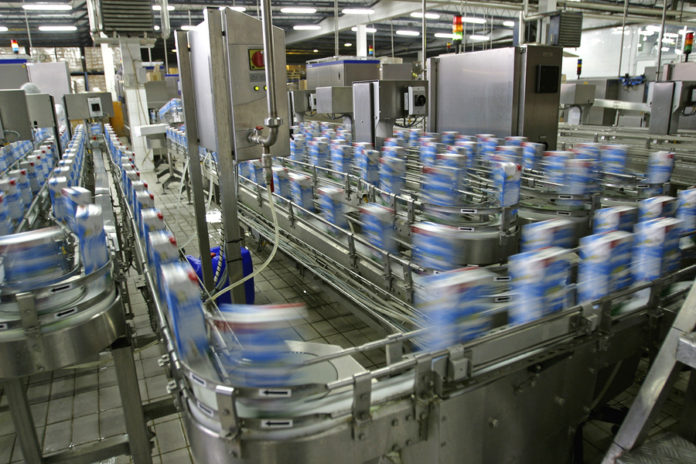
Welcome to this week’s Food Exec Brief, a roundup of the most important news shaping food and beverage manufacturing, from supply chain disruptions and sustainability pressures to innovation breakthroughs and processing technology advances.
Key takeaways:
- 🌡️ Climate crisis deepens: Extreme weather across Europe and East Asia threatens Q4 ingredient availability, while Australia’s egg crisis forces bakery reformulation strategies that cut egg usage by 15-30%.
- 📋 Regulatory turbulence: EU Green Claims Directive faces potential withdrawal amid industry pressure over compliance costs, while US food waste laws expand across seven states with new EPR packaging requirements.
- 🌱 Plant protein momentum: Advanced centrifuge technology enables commercial-scale wet fractionation with protein purities up to 85% and yields of 75%, signaling infrastructure readiness for mainstream adoption.
- 🔬 Processing innovation: Heat-free fruit dehydration systems achieve 95% moisture removal using vacuum and calcium chloride, while cellular agriculture emerges as a scalable solution for future food security.
🌡️ Supply chain disruption and ingredient security
Extreme weather patterns create cascading effects across global commodity markets as manufacturers prepare for Q4 shortages and price volatility.
European crop stress threatens Q4 ingredient supplies
Europe faces severe agricultural stress as extreme heat and drought push soil moisture to 22-year lows, with crop conditions classified as moderate to severe across the continent. While recent rains have provided relief, soil moisture remains at the fourth-lowest level on record, threatening autumn harvests of key ingredients. River levels across Europe hit unusually low points during spring and summer, disrupting transportation of supplies and manufactured products along critical corridors like the Rhine. Industry experts warn that ingredients from European summer crops won’t enter supply chains until after autumn harvest, creating potential shortages in Q4 2025.
Learn more.
Bakery sector engineers egg reduction amid Australia crisis
Australian egg prices reaching AU$14-15 for premium lines have forced commercial bakeries to develop systematic egg reduction strategies, cutting total egg usage by 15-30% in cakes, cookies, and muffins without compromising quality. Industry leaders are mapping specific egg functions—lift and rise, emulsification, binding—then covering those needs with targeted starch, protein, and gum systems. The technical shift represents a permanent change from traditional formulations, with companies building libraries of proven percentage reductions by product family. One-for-one egg replacers have given way to function-first engineering that preserves sensory properties while reducing input costs by 20-50% for specific formulas.
Learn more.
📋 Regulatory uncertainty and compliance challenges
Global sustainability regulations face implementation delays while US states expand food waste and packaging requirements, creating complex compliance landscapes.
EU Green Claims Directive faces potential withdrawal
The European Commission announced plans to withdraw its legislative proposal on environmental claims following industry pressure over administrative burdens, suspending trilogue negotiations scheduled for June 2025. The directive, designed to combat greenwashing through third-party verification of sustainability claims, faced criticism for imposing excessive costs on manufacturers. If revived, the Commission indicated micro-enterprises might be excluded from scope, contradicting the EU Council’s mandate. Industry observers warn that withdrawal would create regulatory uncertainty for food companies already investing in sustainability verification systems, while the incoming Danish Presidency may revive discussions later in 2025.
Learn more.
US food waste laws expand across seven states
Food manufacturers face new compliance requirements as Extended Producer Responsibility (EPR) laws expand across California, Colorado, Maine, Oregon, New Jersey, Minnesota, and Washington. California’s SB 54, the most comprehensive legislation, requires 25% plastic packaging reduction by 2032 and began phasing into effect in 2025. Colorado implemented voluntary programs for small businesses to adopt food waste reduction strategies, while Maine’s new law targeting “designated food waste generators” takes effect in 2030. Industry experts emphasize that manufacturers must track varying state requirements as food waste reduction shifts from voluntary initiatives to mandatory compliance frameworks.
Learn more.
🌱 Plant protein infrastructure and scaling
Advanced processing technologies enable commercial-scale plant protein extraction with yields and purities approaching industrial requirements.
Centrifuge technology unlocks commercial plant protein scale
Advanced wet fractionation systems using decanter centrifuges and sedicanter technology now achieve protein purities up to 85% with yields of 75%, enabling commercial-scale production from peas, beans, and lentils. The technology addresses the plant protein industry’s core challenge: extracting high-quality proteins with proper functionality for food applications. Modern systems incorporate adjustable impeller controls and SIMP-Drive mechanisms that optimize residence time and reduce energy consumption during drying phases. Industry adoption reflects the sector’s maturation from pilot projects to full-scale manufacturing, with installations ranging from regional facilities to large-scale processors supplying global food brands.
Learn more.
Cellular agriculture emerges as scalable food solution
Research from Tufts University identifies cellular agriculture and advanced biomaterials as critical technologies for addressing global food security, with the potential to scale production while reducing environmental impact compared to conventional animal proteins. The study, published in Nature Reviews Materials, emphasizes how edible biomaterials can support low-cost, high-efficiency food production while maintaining safety standards. However, researchers acknowledge that producing biomaterials at the scale needed to address food scarcity remains a major challenge, alongside gaining consumer acceptance once these technologies reach market.
Learn more.
🔬 Processing innovation and efficiency gains
Breakthrough preservation technologies eliminate heat requirements while maintaining commercial-scale throughput and product quality.
Heat-free dehydration achieves commercial moisture levels
Researchers have developed a room-temperature fruit dehydration system using vacuum conditions and food-safe calcium chloride that removes 95% of moisture content, matching commercial dried fruit standards without energy-intensive heat processing. The breakthrough addresses the food industry’s need for more sustainable preservation methods, as traditional dehydration requires significant energy for hot air circulation. Vacuum-dried mango retained bright yellow color while achieving 30% moisture content—comparable to commercial products. The calcium chloride solution can be reconcentrated and reused across multiple dehydration cycles, with recovered water potentially suitable for industrial applications or further treatment for human consumption.
Learn more.
The Food Exec Brief provides weekly insights for food and beverage manufacturing leaders and publishes every Friday. Want to get essential food industry news delivered to your inbox? Sign up for our weekly and daily newsletters.

Credit: Source link











